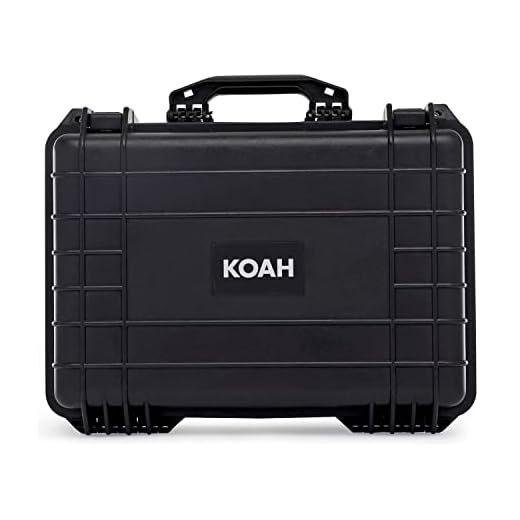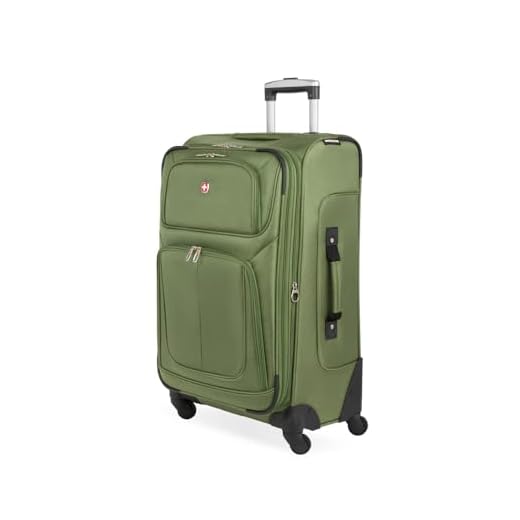





Direct guidance: The U.S. Transportation Security Administration permits non-powered cutting implements to be transported in the aircraft hold. Tools with blades or cutting edges longer than 7 inches (17.8 cm) are not allowed in cabin baggage and must be stowed in the hold. Pack blades in dedicated sheaths or rigid cases to prevent exposure during transit.
Packing requirements: Use a hard-sided container or a locked toolbox inside the main suitcase, pad sharp edges with dense foam, and immobilize moving parts. Label the case if carrying multiple tools and place it centrally to avoid crushing. Loose blades or exposed cutting edges increase the risk of confiscation and potential penalties.
Battery-powered equipment: Remove lithium batteries from powered cutting devices when feasible. Spare lithium-ion batteries must travel in the cabin: up to 100 Wh allowed without airline approval; 100–160 Wh require airline approval; above 160 Wh typically prohibited. Devices with installed batteries may be permitted in the hold only if the carrier allows and the power switch is taped or otherwise protected against accidental activation.
Carrier and destination rules: National aviation authorities and individual airlines apply additional limits. Some carriers and countries ban specific garden, construction or serrated implements even from the hold. Check the airline’s baggage policy and destination legal code before packing; declare restricted items at check-in when required to avoid seizure, fines or travel disruption.
Quick checklist: measure blade length (handle-to-tip), sheath and secure blades, remove or protect batteries per battery-capacity rules, place tools in a hard case inside the suitcase, verify carrier and destination restrictions, and inform ground staff during drop-off if the item appears on a restricted list.
Allowed vs Prohibited Cutting Tools for Hold Baggage (TSA, IATA, International Differences)
Place cutting implements in hold baggage, sheath blades, immobilize moving parts, remove fuel, and remove spare lithium batteries before presenting items at the counter.
TSA (United States)
Cabin limits: Any blade tool with handle-to-tip length greater than 7 inches is prohibited from the cabin; shorter blade tools may be permitted in cabin subject to screening. Hold baggage: Manual blade tools (axes, hatchets, chisels, hand-operated bow-frame cutters, circular-blade hand implements) are generally permitted in hold baggage when properly sheathed and secured. Fuel- or pressurized-gas-powered cutters and devices containing flammable liquids are prohibited in both cabin and hold. Battery rules: spare lithium batteries must travel in cabin only; devices with installed lithium-ion batteries are usually allowed in hold if terminals are insulated and the airline’s watt‑hour limits are observed.
IATA and international differences
IATA guidance permits sharp and cutting implements in hold baggage but requires carriers to follow Dangerous Goods Regulations for fuels, gas cartridges and batteries. National aviation authorities and some carriers impose stricter controls: EU/UK authorities mirror U.S. cabin/hold distinctions; Australia and Canada broadly allow blade tools in hold; certain Middle Eastern and Asian carriers may require declaration, size limits, or refuse professional-grade workshop cutters unless transported as cargo. Practical measures that satisfy most jurisdictions: pack tools in a hard case, sheath blades, pad to prevent movement, drain fuel systems and ventilate tanks, remove spare lithium batteries and carry them in cabin with terminals taped. For high-value or commercial tool shipments, expect airline approval, special packaging and possible transfer to air cargo. Consider travel protection such as best value umbrella policy for liability and loss coverage.
Packing checklist: sheath blades; hard case and internal immobilization; defuel and purge fuel systems; remove and cabin‑carry spare lithium batteries (protect terminals); measure overall length if intending cabin carriage; declare oversized or commercial items at check‑in and verify the carrier’s restricted‑items list before departure.
Packing and securing blades and folding tools to meet airline and security screening
Step-by-step packing
Store folding blades in a rigid, lockable case (ABS or polycarbonate, wall thickness 3–5 mm); place 2–3 cm (0.8–1.2 in) closed-cell foam around the blade and between blade and case walls to prevent contact during impact.
Lock the folding mechanism fully; immobilize the mover with a medium-strength nylon cable tie (50–120 lb tensile) through the handle and pivot or use heavy-duty cloth tape (48 mm packing tape) over the joint. For extra security, place a tamper-evident seal over the case zipper or latch.
If the blade is removable, pack small parts in a separate labeled hard container and pad each part individually. For multi-blade kits, separate blades with foam dividers and stack flat to avoid point pressure on the case shell.
Placement, labeling and screening considerations
Position the protected case in the suitcase center surrounded by clothing to absorb shocks; avoid placement next to dense electronics or lithium battery packs to reduce the chance of secondary inspection. Use a clear, printed label with owner name, phone and a short description such as “folding blade tool – secured in rigid case.”
Opt for a transparent or semi-transparent hard case to accelerate X‑ray identification; do not wrap metal components in aluminum foil or multiple heavy layers that obscure X‑ray shape. Photograph the packed item before transit and retain purchase receipts or service records to present at check‑in or security if requested.
Declare the item at the airline desk when required by carrier rules; follow local aviation security instructions during screening. For protective soft-case or weatherproof bag options and size fits, see this comparison: best australian beach umbrella. For techniques on vibration isolation and padding methods that translate well to hard-case interiors, consult: how to silence your air compressor tips and techniques.
How and when to declare tools: airline notification, documentation, and potential fees
Notify the carrier and ground handling agent at booking or no later than 48–72 hours before departure when transporting cutting implements, power tools, or toolkits in the aircraft hold.
- Primary contacts: reservations, special baggage desk, and station operations; if moving items as cargo, contact the airline cargo office for acceptance rules and rate quote.
- Declare at airport check-in only if prior notification was impossible; expect longer processing times and possible denial of acceptance.
- Prepare documentation
- Itemized inventory with make, model, serial numbers and invoice or proof of ownership.
- Employer letter or work order for professional tools explaining purpose and duration of use.
- ATA Carnet for temporary admission across multiple countries (recommended for professional equipment with high value).
- IATA Dangerous Goods Declaration and MSDS if items contain or are fitted with fuel, solvents, or lithium cells that exceed passenger limits.
- Follow airline acceptance process
- Submit photos and list by email or online form if requested; retain written confirmation of acceptance or special-handling instructions.
- Be prepared for inspection at the aircraft hold or cargo acceptance point; removal of hazardous components (fuel tanks, loose lithium cells) may be required before acceptance.
- Anticipate fees and handling options
- Common surcharges: domestic piece fee ranges typically $30–$150; international piece fee ranges typically $75–$400 (varies by carrier and route).
- Oversize/overscale surcharges commonly $75–$300 per item; overweight per-kilogram charges commonly $10–$50/kg above allowance.
- Special handling or acceptance via cargo office may incur minimum handling charges or full cargo tariff instead of passenger baggage rates.
- Customs and import considerations
- Commercial or high-value instruments may require export declaration or temporary import bond; present invoices and Carnet at customs to avoid duties.
- Failure to declare commercial-use equipment can trigger fines, seizure, or import duties at destination.
- Consequences of non-declaration
- Refusal to accept at check-in, on-the-spot confiscation by security, forced forwarding as air cargo with extra fees, flight delay for additional screening, and potential fines by authorities.
Checklist before arrival at the airport: carrier confirmation of acceptance, printed special-baggage or cargo reference number, inventory with serials and invoices, employer/contractor letter if applicable, and any required Dangerous Goods paperwork.
What to expect at security screening and baggage claim: inspections, confiscation, and recovery options
Request a written receipt at the checkpoint for any item removed, photograph the bag, tag and boarding pass, and note the officer’s name or badge number immediately.
Inspection and immediate handling
Officers may open a bag for manual inspection and will separate items deemed prohibited or suspicious. Removed items are typically tagged, documented and either left with the airline, held by airport property services, turned over to local law enforcement, or disposed of according to agency policy.
If a notice is left inside the bag, treat it as the primary proof of removal: keep that paper, the boarding pass, and the bag tag. If no notice is provided on site, request a written explanation or supervisor contact before leaving the screening area.
Recovery pathways and timelines
Three common recovery routes exist: retrieval from the airline’s baggage service office (at the claim area), collection from the airport lost-and-found or property room, or coordination with the agency that seized the item (TSA or local police). Initiate inquiries at the airport before leaving whenever possible; many airports and carriers require report of missing or removed items at the claim desk or within 24 hours for best results.
Contact the TSA Contact Center for items removed at security: 1‑866‑289‑9673 or use the online contact form on the TSA website. Provide date, time, checkpoint location, flight number, bag tag number and a clear item description. If law enforcement is involved, obtain the case number and the responsible agency’s property-release procedure.
Airline-held property typically follows carrier policies for retention and return; airport lost-and-found offices commonly hold items from 7 to 90 days depending on facility rules. If retrieval requires shipment, expect owner-paid shipping and handling charges.
For formal claims: file a baggage or property claim with the carrier (at the airport and via the carrier’s web form), keep all receipts and documentation, and escalate to the Department of Transportation or Montreal Convention channels only after local options are exhausted and carrier deadlines have passed.
Documentation to gather for any recovery effort: boarding pass, bag tag, confiscation notice (if provided), photos of the item and bag, purchase receipts or serial numbers, officer name/badge and any law-enforcement report number.
When items are permanently retained or destroyed, request written justification and the contact details of the seizing authority. If disagreement persists, submit a formal complaint to the seizing agency and include all documentation; consider insurance claims for high-value property if recovery fails.







